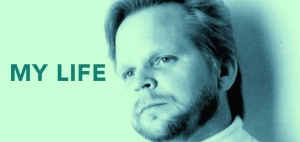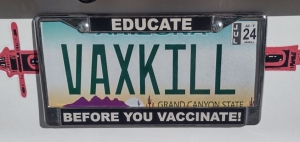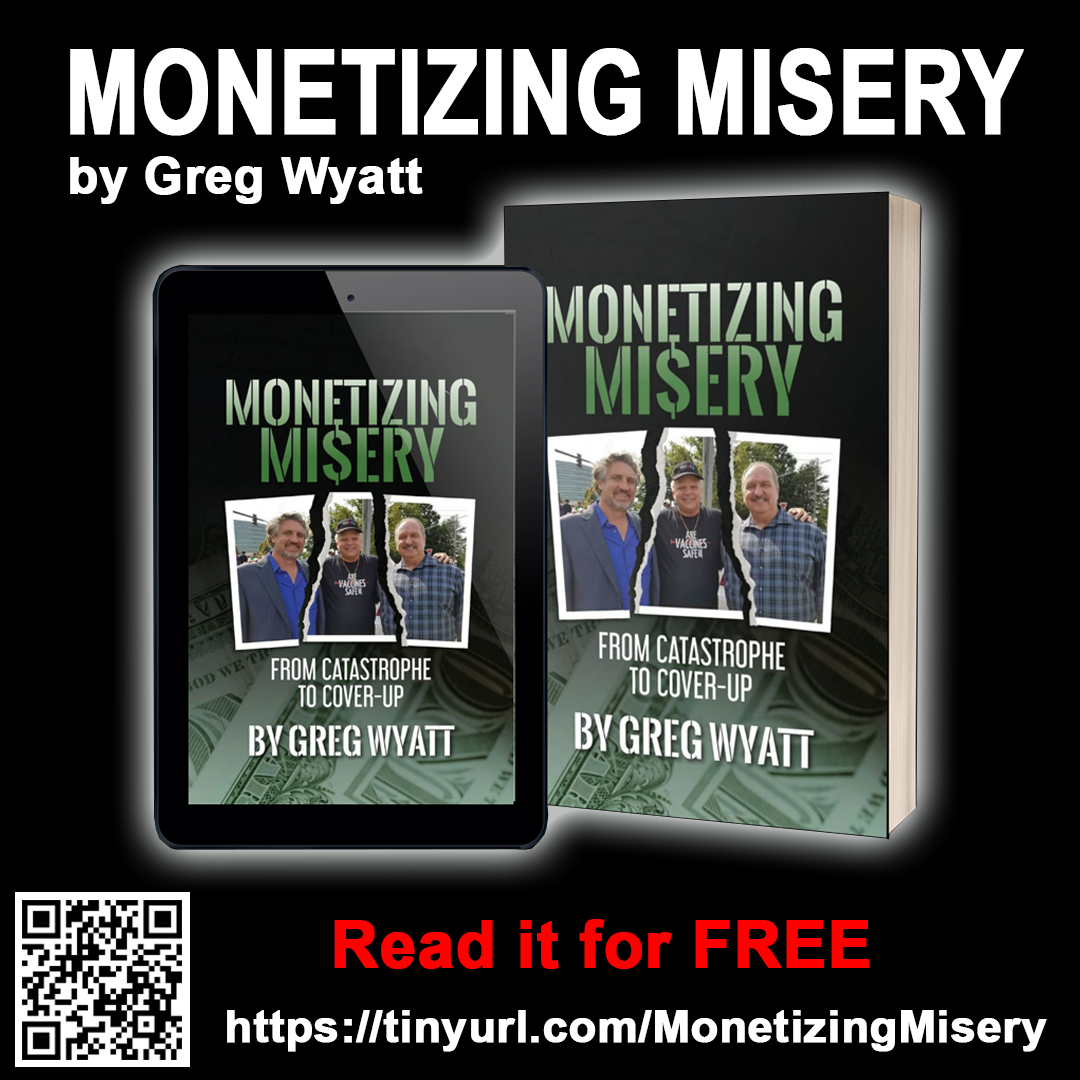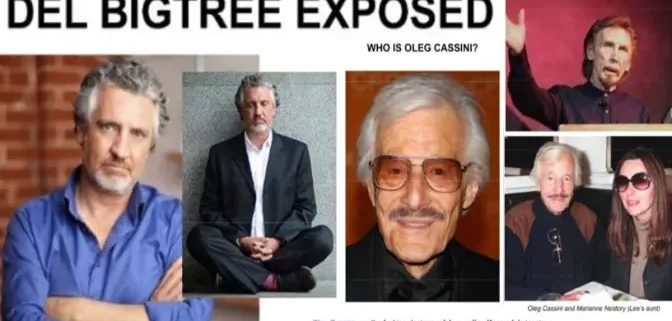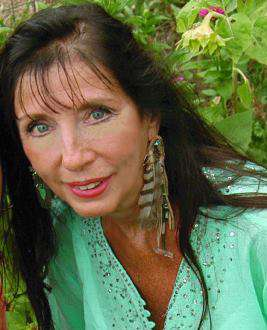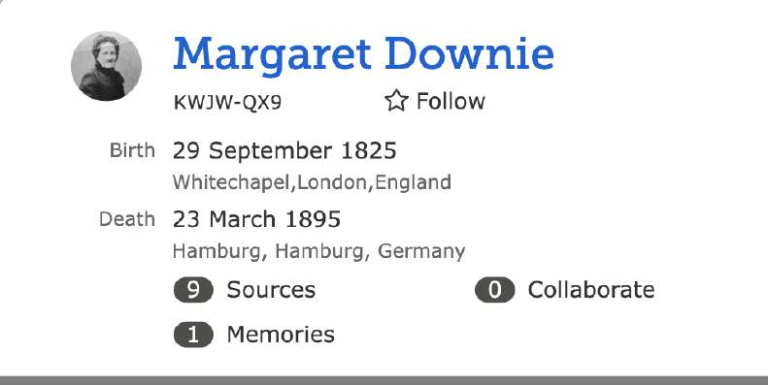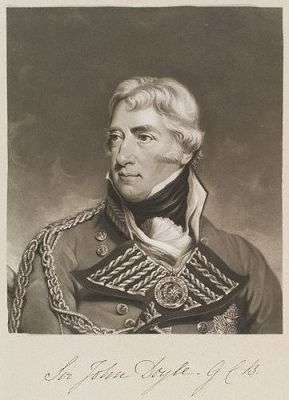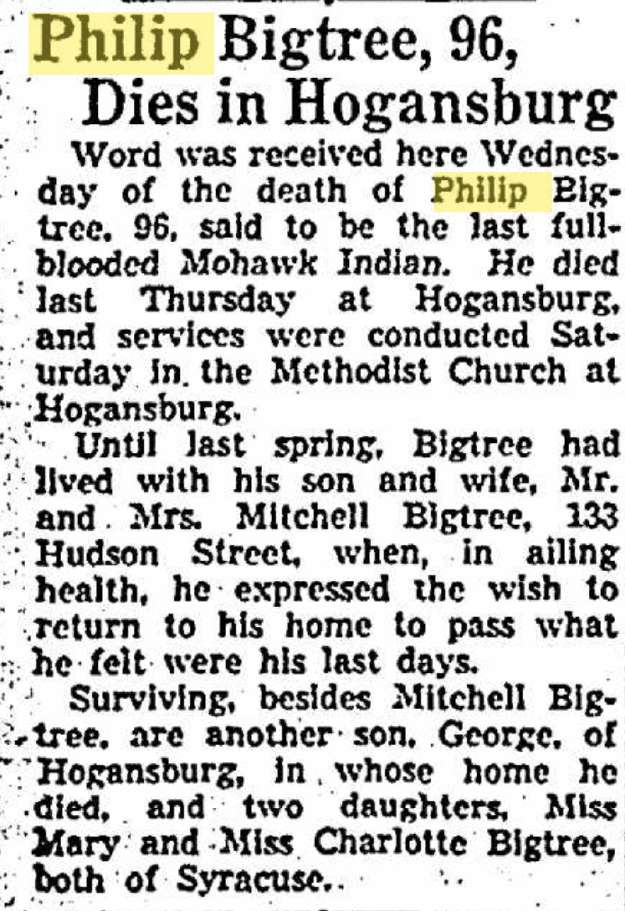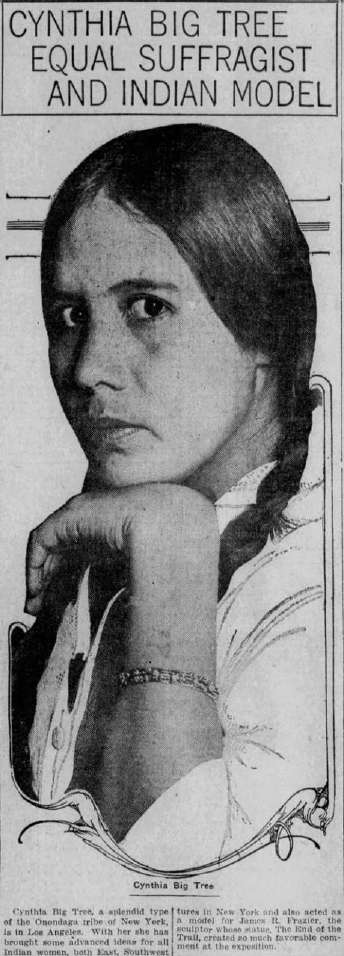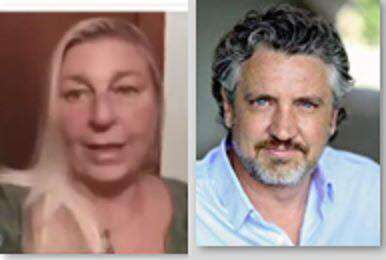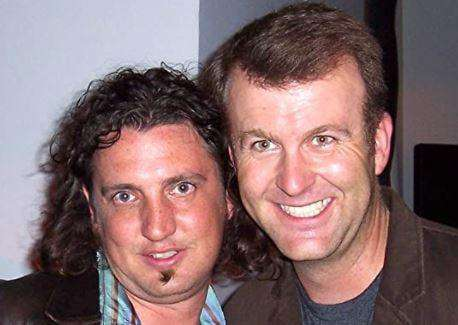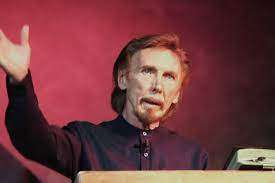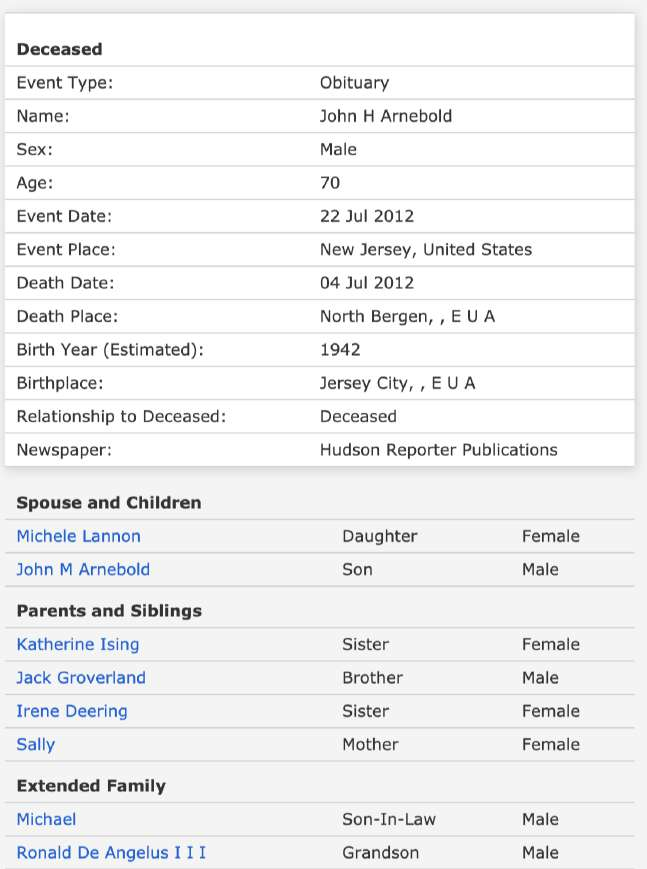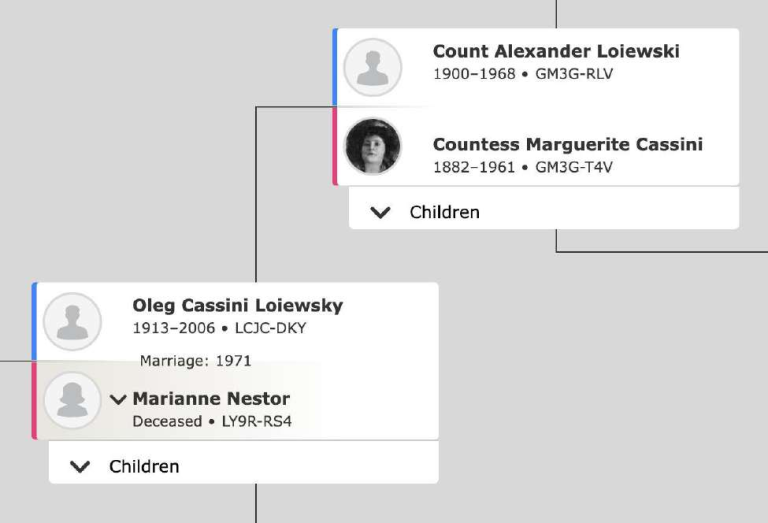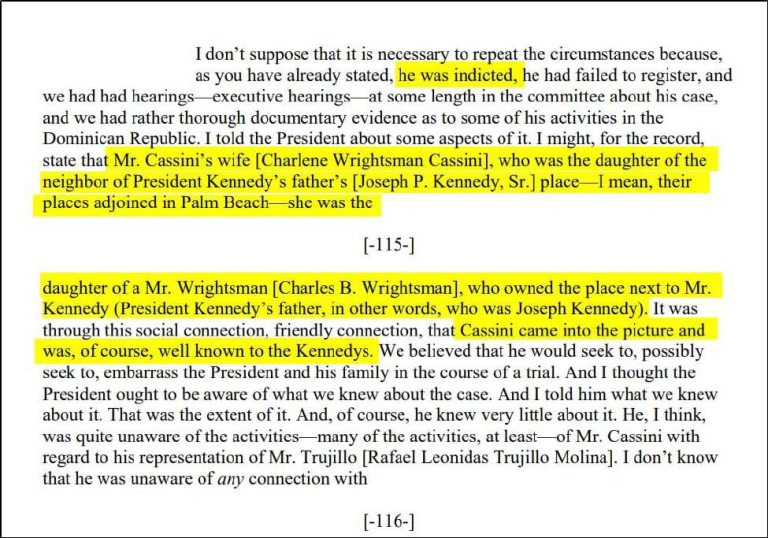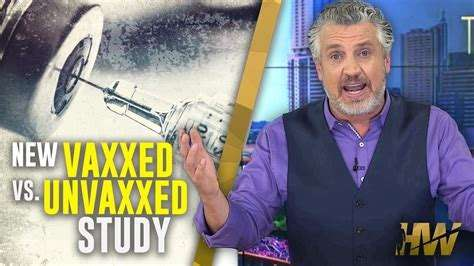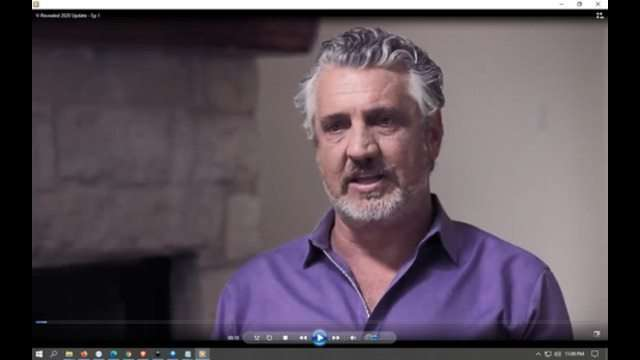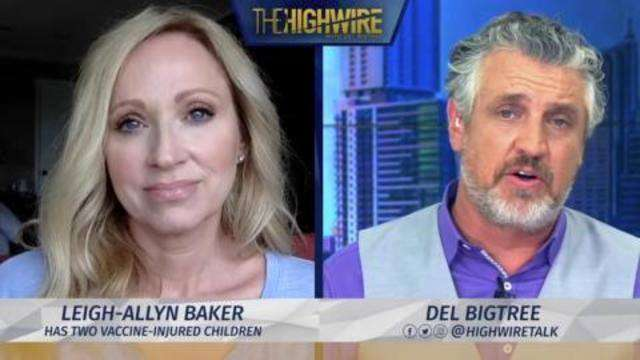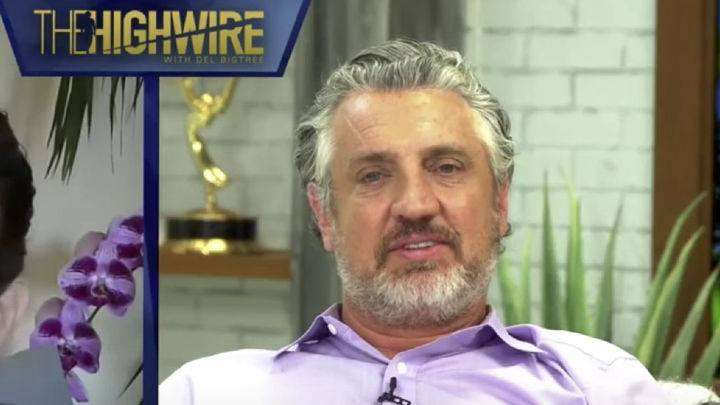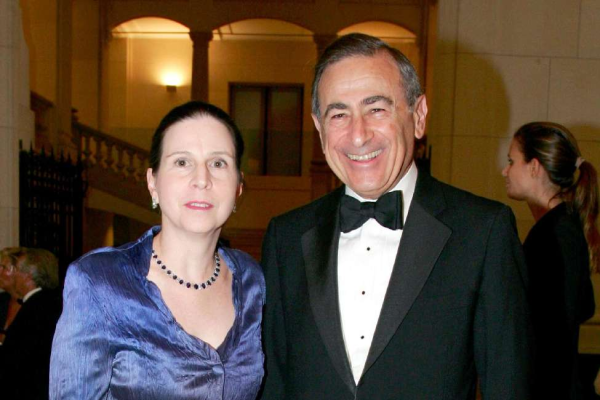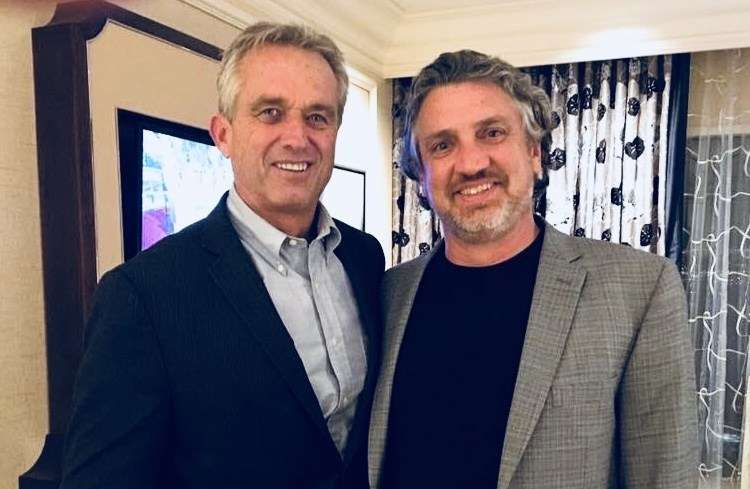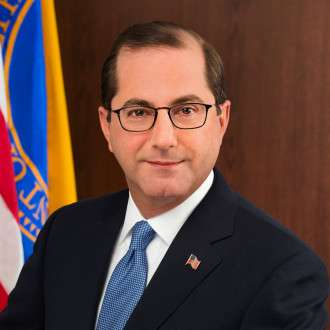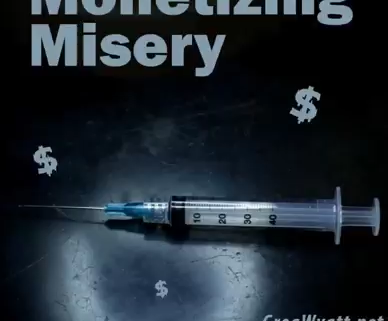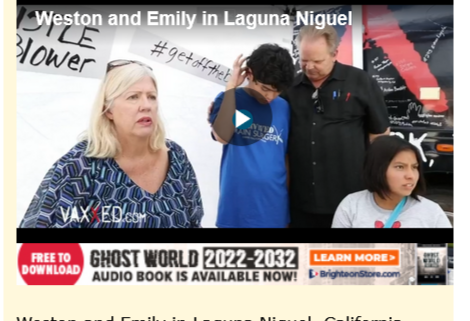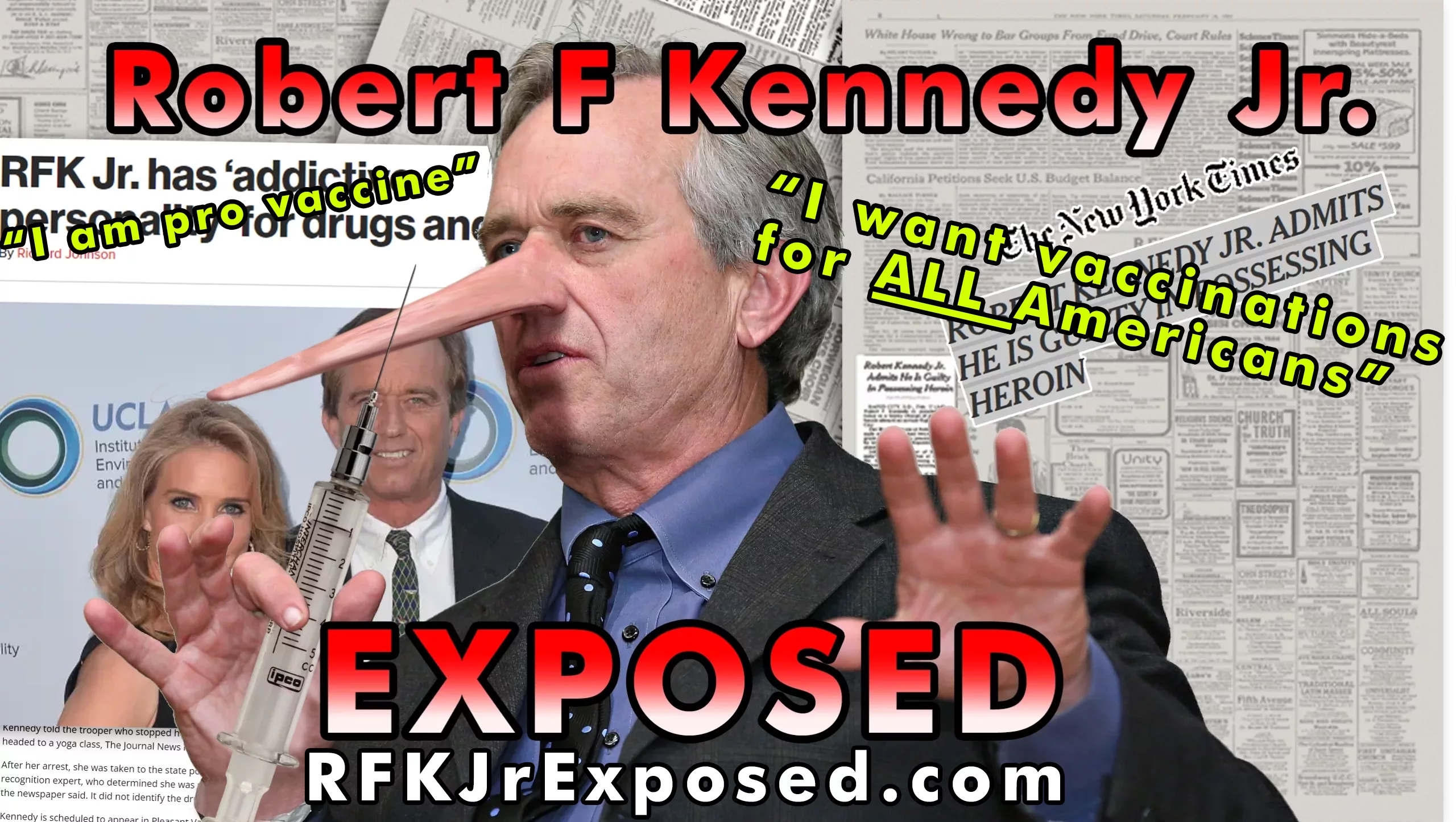Please visit gregwyatt.com
for my new website.
This website is my old version and is no longer updated.
Greg’s Blog…
The Sterilization of Herbert Wyatt
/4 CommentsIn 1927, the US Supreme Court case BUCK vs. BELL set illegal precedent that states may sterilize the inmates of public institutions. At the time, entire families and children were being seized out of their homes that have committed no crimes. Actually, their crime was being poor. Or, simple petty crimes, such as stealing a loaf of bread to feed your family could get you a lifetime of incarceration and sterilization with no due process and no chance of ever leaving. Many of these people were placed in homes for the feeble-minded, or other state-run institutions where they were used as slave labor by the local municipalities. They sterilized them under BUCK vs. BELL because they believed that being an imbecile, epileptic or feeble-minded was a hereditary thing and the inmate should be prevented from passing these defects on to the next generation. My father, Herbert Wyatt, was someone that had done nothing to deserve his fate. However, if this misfortune had not happened to him, I would not be here to tell his story.
Maybe there is More to Johnny Depp?
/3 CommentsThere may be more to the story, but if this Facebook post is correct, it doesn’t look too good for Johnny Depp’s reputation.
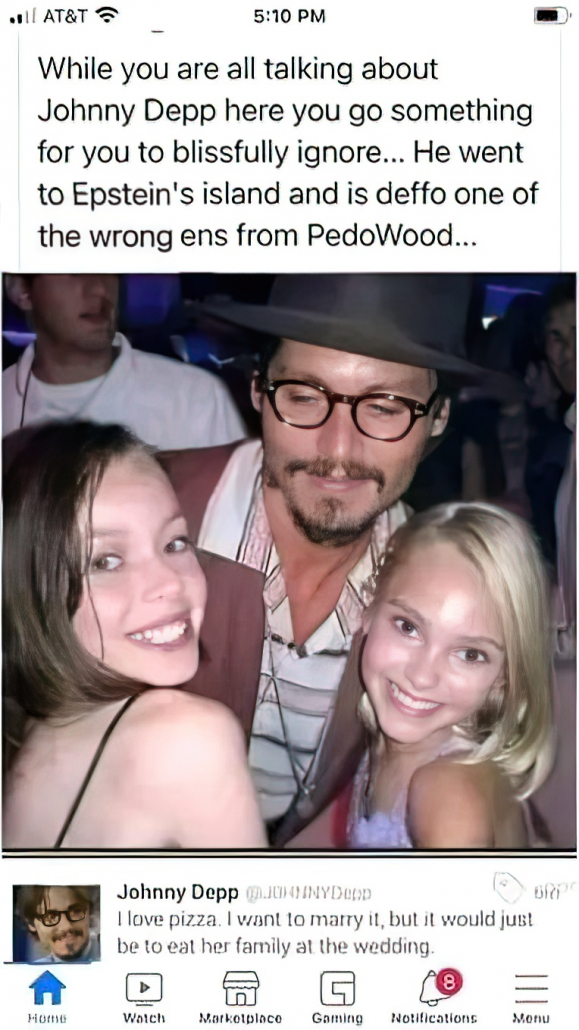
Pfizer’s Vaccine Safe for Pregnant Women? – NOT NOT NOT!!!
/0 CommentsIt’s amazing the truth you find if you just lift the carpet.
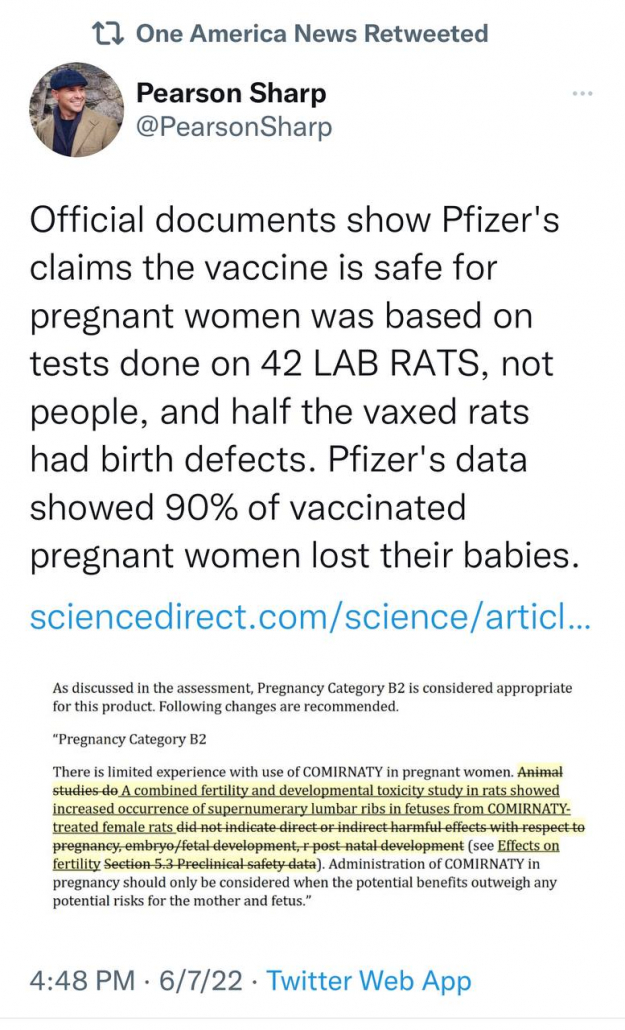
Del Bigtree Exposed (by Danny Boy Limerick)
/3 Comments
INTRODUCTION
The following information is a presentation of evidence, combined with my opinions, based on factual details available in the public domain. My opinions are based on the evidence. I do not claim to present an overarching or objective truth, and I encourage all readers to engage in their own research by following the links available in this document. It is up to each individual to research for themselves in order to determine whether or not your conclusions align with my assessment and analysis of the evidence. Consider this document a starting point to a larger body of research and a more thorough investigation. Use your own discernment and please do fact-check and send me corrections.
I don’t trust Del Bigtree because I believe he (and others) have co-opted the legitimate grassroots “anti-vaccine” movement, and turned it into a more palatable and acceptable “Safer Vaccine Movement” or the “Vaccine Risk Awareness Movement”, as part of an elaborate controlled opposition campaign. This has been obvious to many of us for a long time, but for people who may be new to these concepts, I will lay out some of the basics.
This campaign is designed to take control of the legitimate opposition voice, which understands that all vaccines are dangerous, create new artificial boundaries as to what is and isn’t an acceptable level of resistance and dissent in the public discourse about vaccines, and silence and marginalize the informed and unjected – the real dissidents and the real health and freedom movement – people who understand that there’s no such thing as a safe vaccine.
This campaign aims for and achieves several goals and objectives. Among them, it redraws the lines around what is considered “acceptable” debate about vaccines by labeling folks like Del and his buddy RFK Jr. as “anti-vax extremists” who are spreading “dangerous information,” when in fact they are soft-serve activists who aren’t extreme at all – except in the sense that they think vaccines are generally safe and effective, which is i-n-s-a-n-e. The psy-war on reality turns night into day and day into night which results in normal, healthy, intelligent people pushed out of the conversation altogether and relabels people like Del, who are half cray-cray pro-vaxxers as the “extremists.” But the real extremists are the mainstream science and media lovers who are 100% rabidly pro-vaccine, including the so-called new “experimental” COVID19 vaccine.
Del and his cohorts are just as nutty as these folks, with the exception that they want the vaccines to be “safer”. The opposite of the word ‘safe,’ is ‘dangerous.’ So by making something “safer,” you are, by definition, really only making it “less dangerous.”
What the majority of folks in the COVID truther scene don’t understand is the pervasive nature of this controlled opposition campaign, its strategies and tactics, and ultimate goals.
The truthers have been set up to fall into these traps, thanks to wolves in sheep’s clothing like Del Bigtree. The ultimate goal of this insidious campaign is very simple – it is designed to get the skeptics and truther community to DEMAND
MORE GOVERNMENT.
This is accomplished via a ‘slow reveal’ strategy, employed by the mainstream and alternative media, who are one in the same and work for the same interests and agendas under a cover of manufactured conflict. The slow reveal happens over a course of months and years. Slowly, more and more information is ‘brought to light’ that the COVID vaccines are dangerous. This is accompanied by soap opera storylines which focus on people like Dr. Fauci or Bill Gates, and evil corporations like Pfizer and Moderna, in order to get the truther masses hooked and addicted to the fear-laced drama. Like all people with addictions, once they are hooked, they keep coming back to engage with this surface level drama and miss the big picture.
So – here is the big picture. It is VERY SIMPLE TO UNDERSTAND.
While this paper may focus on vaccines, the bigger picture is not about vaccines, and has never been about vaccines. This is about CONTROL. Control of the population and every aspect of our physical and spiritual lives, which is achieved by giving the GOVERNMENT and the DEMONS more control over EVERYTHING. The vaccine is only one of the vectors which this operation uses to spring into motion a series of objectives that ultimately lead to the new world government globalist technocratic slave system.
Agents like Del Bigtree and RFK Jr. play an important role in this operation. One might say they are central to its success. They gain the trust of the skeptics who gradually hand over what little critical thinking skills they have to these deceivers, without realizing that they have been specifically cast in these roles as benevolent heroes, to fight the evil Fauci/Gates/Pfizer characters. This is written as part of the screenplay and is obvious for those who have moved past the first layers of deception.
Sadly, most truthers are completely oblivious to this, which is why I have to keep writing these damn papers. This is known as classic PROBLEM, REACTION, SOLUTION.
The entire scam relies on these heroes to highlight the “dangerous vaccine problem” via the long and drawn out “slow reveal campaign” – wait for the public’s reaction and then present the solution. It goes something like this:
Problem: Fauci/Gates/Biden/Pharma/Whoever are corrupt and evil!
Pfizer/Moderna engaged in data manipulation and lies! The COVID vaccines are dangerous!
Reaction: “OMG! THE VACCINES ARE DANGEROUS! THEY’RE TRYING TO KILL US! SOMETHING MUST BE DONE SO THIS NEVER HAPPENS AGAIN!
WHERE ARE OUR HEROES!??”
Solution: We must make the vaccines safer! These companies must be held accountable. We must have better safety regulations and oversight. We need a task force to investigate the corruption and root out the wrongdoing. Those responsible must be held to account and we need a new regulatory body to play the role of watchdog over these evil Big Pharma companies!
WE NEED MORE GOVERNMENT!!
There is an even more insidious goal underneath all of this, which lies in the spiritual realm. The goal is to lead the truthers astray and towards the false light, by exposing the dark and sinister plan of the mainstream’s agenda. That is by design and that is why we see the Fauci/Gates/Pfizer clan exposed so thoroughly and more people “waking up” to the evil agenda. They’re not really waking up, though. The darkness is meant to be exposed, in order to lead them to the false light. It’s a trick and an easy one to understand if you pay attention. This is an important subject that needs to be explored further but is outside the scope of this paper. I only wanted to mention it briefly because it’s relevant.
As we all know by now, none of the so-called leaders of this fake resistance movement are interested in completely tearing down this evil, corrupt system or eliminating toxicity from our lives. All they care about is creating the illusion that the vaccines can be made SAFER. This is an obvious LIE that anyone can understand, if they’ve done their homework. The reason it’s a lie is because there is no such thing as a safe vaccine. If this sounds extreme to you, it’s because you have not yet started your journey of unlearning.
So, in order to drive this point home, it’s time to expose everyone’s favorite “safe vaccine” advocate, Del Bigtree.
Before we start, let me just say that I knew who Del Bigtree was prior to launch of the fake COVID19 pandemic, via his propaganda film VaXXed, but I noticed immediately how he had been pushed into the spotlight to control the opposition narrative early on in the pandemic which was an immediate red flag. Indeed, within those first few weeks, Del quickly became the “go to” source of information for those who had a hunch something fishy was going on, and thus established himself as a trustworthy and credible voice for the gullible truther/skeptic crowd.
I immediately smelled a rat, not because of anything he said or did at the time, but simply because the slick production behind his Highwire show was an obvious clue for me. He was GIVEN to me, which made him suspect from the beginning.
I then began doing my own research on him and exposing him online in different research groups and channels. That is when I found the work of Greg Wyatt. Greg has the best research on the internet and has been exposing the Del Bigtree crime syndicate for years.
With the above in mind, please use this paper as a guide or a starting point only. I will only scratch the surface and give you the most important information, but if you continue down the rabbit hole, you will find a lot more and I highly recommend Greg Wyatt’s research for all the information you need. I also recommend doing your own research, as well. Don’t just take my word for it or Greg’s word for it, do your due diligence and if you find errors in this paper, please send them to me. I consider Greg a man of integrity who is honest and as trustworthy as they come – a rarity in the so-called “truther” scene. Greg has also been through HELL to bring this information to us, so respect the research and do your homework. Start with this paper and then the information on Greg’s website.
Finally, I want to thank Greg for his research which has been a valuable companion to my own. While I found a lot about Del on my own, Greg deserves most of the credit because he has been doing this a lot longer than I have. I am grateful for his tireless and exhaustive efforts at exposing these criminals. He has left me some very valuable breadcrumbs that I’ve used to find more information.
PART 1
THE APPLE DOESN’T FALL FAR FROM THE BIG TREE
So first, let’s start with Del’s background and family history. The following italicized sections were written by Greg Wyatt with additional sources added by me. I followed Greg’s leads, fact-checked and did my own, additional research.
Del has a family history of being a showman and as such, there is the mask he wears in public and the products of his actions in real life. There seems to be a disconnect between what this actor portrays himself to be and the truth.
A FAMILY OF ACTORS
Del Matthew Bigtree, also known as Delores Jackson, was born in April 1970 to Jack Groverland and Norma Bigtree. He grew up in Boulder, Colorado.
Del’s Mother, Norma Groverland
Norma was born on January 14, 1943 to Norman and Mary Bigtree in Syracuse, NY. Norman Bigtree (05/10/11 – 03/26/71) was a full-blood Iroquois Indian born on the Onondaga Reservation. Norman was a machinist for the Chrysler Corporation until his death in 1971. Norma was the eldest of three daughters, followed by Jeanne Bigtree (now Bagi) and the youngest Sandra Bigtree… When
Sandra was just one, the three sisters started performing together as the Big Tree Sisters
…Norma met Jack Groverland in the early 1960’s and they appeared in off-Broadway productions together in New York City. Norma starred in Curley McDimple (a Shirley Temple spoof) from November 22, 1967 to January 15, 1970. She performed with Barry Manilow, Bernadtte Peters, etc, when she met Jack Groverland.
When “Tent Revival” preaching became popular in the 1960’s, Norma and Jack suddenly found a more lucrative career promoting God and ditched the theater for the tent. It’s not clear why Del does not have his father’s last name.
Well, Del’s father’s last name isn’t actually Groverland, but we’ll come back to that later.
So, with just a cursory check of Del’s family, we’ve learned two important things. First, we’ve learned that Del’s family has been involved in showmanship and acting. This is important for obvious reasons. It suggests that Del too is nothing but an actor. We’ll explore this later.
From Norma’s Bio, on her own website, she says that she is the daughter of a
Mohawk Native American Father (Norman Bigtree) and a Russian Immigrant
Mother (Mary Wolniak). The Mohawk are an Iroquoian-speaking North
American Indian tribe and the easternmost tribe of the Iroquois
(Haudenosaunee) Confederacy, so this is consistent with Greg’s findings.
Other sources confirm that Norman was indeed a “full-blood Iroquois Indian born on the Onondaga Reservation.” Norman’s race is listed as “Indian” (same for his father, Mitchell) here. But the U.S. Census data from 1940 lists Norman’s race as “White,” and his Ethnicity as “American.”
Norman’s father is Mitchell Bigtree, born in 1876.
Here is a photo of Philip Bigtree.
Norman Bigtree is listed in the Geneology sites as one of nine children of Mitchell Bigtree and Margaret Ellen Doyle. Mitchell and Margaret Ellen Doyle were married in Manchester, England on April 6, 1896. Norman was born 15 years later (allegedly on the Onondaga Reservation).
Also, I’ve found that some sources list him as Norman Bigtree (one word), while others list him as Norman Big Tree (two words).
According to the book Notes on the Iroquois by Henry R. Schoolcraft, it is confirmed that the Big Tree family (two words) was indeed from Onondaga, but the US Census data from 1888-1893 lists the Bigtree family (one word) in St.
Regis, not Onondaga (Norman was born in 1911).
Norman’s Great Grandmother on his mother’s side is Margaret Downie, born in England and died in Germany. So it’s clear that Norman can’t be full-blooded Iroquois Indian. The Indian is on his father’s side only.
It should also be noted that Doyle (Norman’s mother, Mitchell’s wife) is a peerage name, including at least 5 Baronets. Just one example is General Sir John Doyle, 1st Baronet, who was born between 1750 and 1756.1 He was the son of Charles Doyle and Elizabeth Milley
So clearly there’s no Native American roots from Norman’s mother’s side.
It does seem a little odd that a Native American would travel to England and get married there and then come back, in the 1800s, but it’s certainly possible and not necessarily a red flag. Did he meet Margaret in New York and they went back to her homeland for the wedding? Or was he in England for other reasons and then met her there?
As mentioned before, Mitchell’s father is Philip Bigtree. The Census record lists Mitchell and Philip as from New York.
I can’t find Mitchell’s mother anywhere, but I did find that he has two sisters, Mary and Charlotte. These are Anglo names, which is odd to me, but not necessarily a red flag, per se.
Philip’s obituary lists him as the last full blooded Mohawk Indian, so the sources that claim that Norman was full-blooded are wrong, which is obvious since his mother is from England.
Del’s sister also claims that they are Native American (while also taking the opportunity to remind everyone that she is PRO-VACCINE.)
Greg found a newspaper article that says that Norma Bigtree was the granddaughter of a Mohawk chief whose visage adorns the nickel coin. (Daily News, New York, New York, Friday May 13, 1966.) I was able to find another source for this, here. But I haven’t found any evidence that Mitchell was a Mohawk Chief.
So let’s recap, so that we don’t get too confused. Del’s mother Norma says that her father (Norman) is a Mohawk Native American. Multiple sources say he was born on the Onondaga Reservation, but his records show that he wasn’t born there. Furthermore, he is listed as “white” in the U.S. Census (presumably because his mother is a white European) and his parents (Mitchell and Margaret Ellen Doyle) were married in England. Several newspaper articles say that Norma is the granddaughter of a Mohawk Indian Chief whose likeness was used on the nickel coin, presumably referring to Mitchell Bigtree. But there’s no evidence that Mitchell was a Chief and we know he wasn’t used for the nickel.
Meet Chief John Big Tree
Greg believes that Del might be the great grandson of Indian Chief and Hollywood screen actor John Big Tree aka Isacc Johnny John who appeared in 59 Hollywood films between 1915 and 1950 and was the model for the Indian Chief on the head of the nickel coin.
There has been some confusion regarding the Bigtrees vs the Big Trees discussed in different online message boards.
Greg writes: But an obituary of John Big Tree says he never had any children. Forum posts on a genealogy website have similar discrepancies. A woman who went to school with Norma reports that she was the granddaughter of Chief Johnnie but later forum reports say that articles about John Big Tree indicate he did not have a family. Plus the difference in spelling from Big Tree to Bigtree. So which account is true? In typical showbiz fashion, the truth is lost when the agenda is to sell an image.
For what it’s worth, Chief John was also buried at Onondaga Reservation which perhaps adds to the confusion. My research found that Chief John had 3 wives and 2 children. Chief John is said to have been married to Phoebe White and they had a child named Deforest Johnnyjohn together. He was also married to Clara T. Jimerson, confirmed on multiple Geneology sites – and they had one child together, Birdie Johnny John.
Chief John was also married to Cynthia Johnson Big Tree who is listed as an equal suffragist and Indian Model. They had no children together. She was his last wife.
It is worth noting that Chief John was born one month apart from Mitchell Bigtree and there could be some link here, but I wasn’t able to confirm it. From what I found, there is no relation between Del Bigtree and Chief John, but there certainly could be some swapping or hiding going on in the genealogy sites.
Unfortunately, this is not my area of expertise so I will explicitly say right now that this is just speculation.
I emailed Miles Mathis several times to see if I could get some help but he never responded.
There are rumors that Del and his sister might be adopted, but that’s all they are, rumors. It is worth nothing that Del and his sister look very much alike…
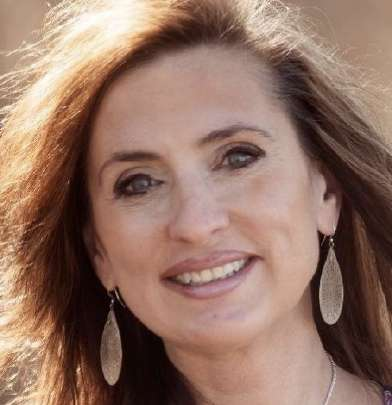

Meanwhile, their brother, Shad Daniel Groverland looks nothing like them.
But Shad does look like his parents, Norma and Jack whereas I see no resemblance to Norma and Jack, in Del or his sister.
I’m sure I don’t need to go into details, as it should be obvious.
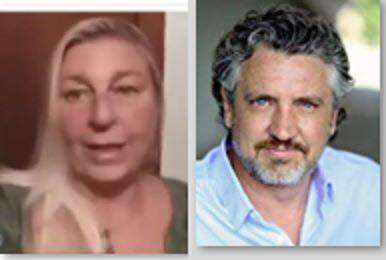 |
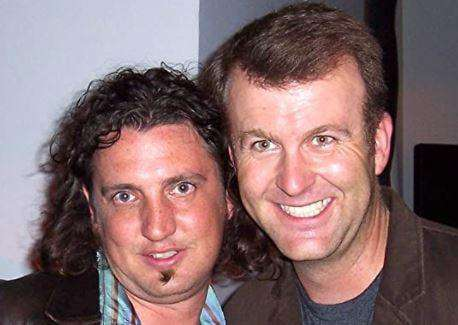 |
Del also has two younger siblings that are said to be fathered by Jack Groverland. Again, there’s not much resemblance at all.
Why is all of this important? Well, I can’t say that it is, given I didn’t find any conclusive evidence one way or another. If Del is related to Chief John, as Greg suspects, then it’s important because it means he’s lying. It’s also important because it establishes a further deep link to Hollywood. As we’ve already seen, Del’s immediate family was involved in Showbiz, and he has been as well. Even some family members who weren’t directly involved in Showbiz seem to have public personas – see Del’s great uncle’s the Wolniak brothers as an example.
Before we move on, I’d like to again repeat that any connection to Chief John Big Tree at this point is speculation only. Perhaps others may find a missing link that I was unable to find. I encourage others to pick up where I left off.
In Summary – We have established that Norma’s father Norman isn’t a full blooded Iroquoi as some sources claim. We have also seen Norman’s name spelled Bigtree and Big Tree leading to further confusion and lending to the possibility that there could be a connection to Chief John Big Tree. We have also learned that Norma’s grandmother is British, and in the peerage. We have also learned that Chief John Big Tree is from the same area, was buried at the Onondaga Reservation, and was born during the same time period (one month apart) as Mitchell Bigtree (Del’s great grandfather). Finally, we have multiple sources that claim that Norma is the granddaughter of a Mohawk Chief whose likeness was used on the nickel coin, but we know Mitchell wasn’t a Mohawk Chief and we know that it was Chief John Big Tree whose likeness was used on the nickel coin. These are the reasons that lead to the suspicions that Del may be related to Chief John, but again there’s nothing concrete. Perhaps they are coincidences, perhaps there is a connection, or perhaps there are errors in the reporting and there is no link at all.
Del’s Father, Jack Groverland
From his bio, Jack says:
“I grew up in the crime infested ghettos of Hoboken and Jersey City where I learned all the wrong ideas about life. I lived with my father, an immigrant truck driver who couldn’t begin to imagine the life I’m living now.In those dark days I was a petty thief, gang fighter, gambler and fool. I left all that when I escaped from jail under a hail of bullets and in the process had my first spiritual experience.
I found the death record for Jack’s brother, John Arnebold which shows us that
Jack had two sisters, Katherine and Irene and his mother’s name is Sally. I found no more information on “Sally,” but Ancesty.com doesn’t list any Sally.
Jack’s father is Frederich “Fritz” Arnebold, who immigrated to the United States from Germany. According to records, he was indeed a truck driver, employed by Charles Miller & Co.
I found no red flags with Jack’s story, however his claim that he escaped from jail under a “hail of bullets,” and then changed his name, requires further attention. Wouldn’t that make him a fugitive? It is also unclear why he changed his last name and there may be something else there worth looking into.
Ancestry lists Fritz’s wife (presumably Jack’s Mother) as Louise Arnebold and I found no further information on her.
Del’s Wife – Lee Nestor
Del is married to Lee Collette Nestor. Lee was born on September 23, 1969 in Switzerland and is the daughter of Peggy Nestor.
Lee is also related to Marianne Nestor who is her aunt. Marianne (aka Dolly) was the secret wife of Oleg Cassini.
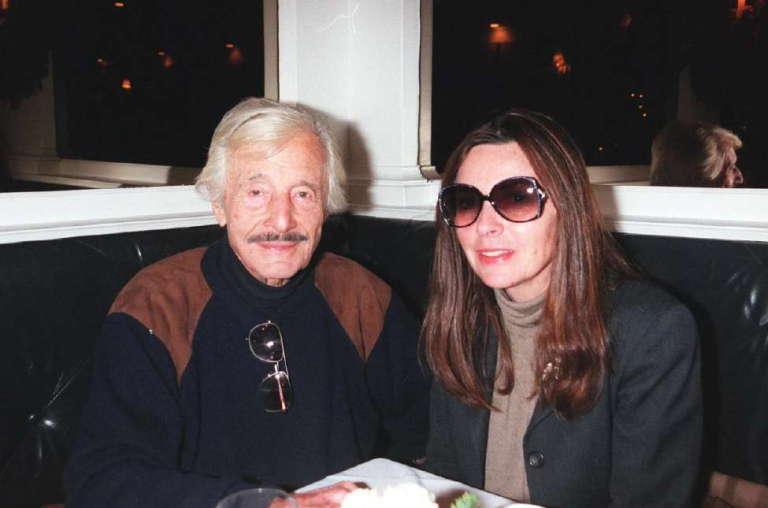
Oleg Cassini and Marianne Nestory (Lee’s aunt)
Peggy (Lee’s Mom) was the creative director for the Oleg Cassini brand.
WHO IS OLEG CASSINI?
Oleg Cassini was the fashion designer of Jacqueline Kennedy’s iconic wardrobe. This is significant because it establishes the start of a relationship between this family and the Kennedy family, (and eventually Del Bigtree).
Jacqueline Kennedy became a global fashion icon during her husband’s presidency. After the 1960 election, she commissioned French-born American fashion designer and Kennedy family friend Oleg Cassini to create an original wardrobe for her appearances as First Lady. From 1961 to 1963, Cassini dressed her in many of her most iconic ensembles, including her Inauguration Day fawn coat and Inaugural gala gown, as well as many outfits for her visits to Europe, India, and Pakistan. In 1961, Kennedy spent $45,446 more on fashion than the $100,000 annual salary her husband earned as president. (Source)
The two Nestor sisters, Marianne and Peggy have been embroiled in a lawsuit over the New York 5th Avenue mansion left to Marianne after Oleg’s death in 2006. Christina “Tina” Cassini and her sister, Daria, daughters of Oleg and Gene
Tierney were the presumed heirs to the nearly $60 million estate. She fought Marianne over her late father’s estate until her untimely death in March of 2015 at the age of 67. The estate battle continues in the eye of the public, as
Alexandre Cassini Belmont, Oleg’s grandson, has also entered a claim. Marianne has spent time in jail as she drags her heels on providing the court with accurate accounting records of the estate of which half is rightly due to the heirs of Oleg’s daughter, Tina. (Source)
Was it then that Peggy Nestor became friends with the Kennedy family? Is Lee the link between Del and his current business partner Robert F. Kennedy, Jr. and the various business endeavors they have launched?
Lee has also had a showbiz career. She is a singer/musician and actress.
Oleg Cassini had two other wives– Merry Elizabeth Fahrney, and actress Gene Tierney. He was also engaged to Oscar Award winning actress Grace Kelly. Oleg is also the son of a Count and Countess – Russian Aristocrats.
Czar Nicholas’ ambassador to China and the United States was Arthur Cassini.
HIs daughter, Marguerite, married Alexander Loiewski. Their two children were Oleg and Igor. Both Oleg and Igor were known as “playboys” and had multiple wives. When Oleg died, his estate was worth over $60 million dollars – which is when Marianne Nestor produced a marriage certificate from 1971.

As mentioned, Peggy Nestor is Marianne’s sister and mother to Lee Nestor – Del Bigtree’s wife. This is why we see Lee Nestor in “Cassini Perfume” advertisements.
Marianne and Peggy controlled the Cassini estate and companies after his death.
Oleg Cassini’s brother, Igor was married to Charlene Wrightsman Cassini, the daughter of the Charles B. Wrightman who was the neighbor of Hollywood Kingpin Joseph P. Kennedy, Sr. (RFK and JFK’s father).
It was Bobby Kennedy Sr. (RFK Jr.’s father) who indicted Igor Cassini.
We now understand that Del has links to Hollywood and direct links to the
Kennedys through his wife, Lee Nestor. The entire Kennedy family are Hollywood Elites. But that’s a story for another time. We also know that as early as 2013, Lee was Design Director for Special Projects and Oleg Cassini, Inc.
https://m.bpt.me/event/450402f
PART 2: BRIGHT LIGHTS, BIG TREES
If we understand psychological warfare, then we also understand that Hollywood is often used in propaganda operations. I might even go as far as suggesting that Hollywood is the propaganda arm of the United States Military.
The main goal of the Del Bigtree operation is to catch the first layer of regular folks who fall through the holes of the mainstream media’s fraudulent COVID narrative net. These are folks who haven’t researched much, still believe COVID is caused by a virus, but may be hesitant about the new experimental vaccines. Some of them might be distrustful of Government and wary of vaccine mandates. They generally believe that most vaccines are probably safe and effective, you may find some who are just now starting to be skeptical of all vaccines. Many of these people became skeptics specifically due to Del’s Vaxxed movie. This has been carefully planned for years, as we will come to see.
The fake anti-vaccine opposition strategy aims to harness all of these people, soften their opposition voice, and steer them into a well-crafted and carefully manufactured faux movement that will never get “too extreme.” Ultimately, this is controlled by Big Pharma, the banking cartel and various 3-letter agencies who understand that in order to achieve their objectives, they must have full control over the opposition voice. They cannot risk these folks being “radicalized” by those of us who have actually done the research and understand this psyop in detail, and they definitely cannot risk these folks wandering off to research for themselves.
In order to do this, they must first construct a new pen to herd the sheep into. This pen is carefully constructed with artificial boundaries that are created specifically to draw the limits as to what is and is not and acceptable level of dissent. If they don’t do this, then they run the risk of the public and start asking deeper questions about viruses and vaccines while redrawing the boundaries of a new box to keep them inside of.
What is imperative to understand is that this pen is where they want everyone to end up in, from the beginning. In order to do that, they must construct the cartoonish Fauci/Gates/Pfizer evil empire and then reveal it as such, gradually so that over time, more people will gravitate towards the pen that they want everyone in, because it looks safer than the mainstream’s pen. It’s a bait and switch. An illusion.
The powers that be cannot have these fence-sitters digging any further and they cannot afford to have the public learn the truth about Polio, HIV, Smallpox, Spanish Flu, Ebola, etc. So they simply create this new pen and dress it up as the “extreme opposition conspiracy voice,” knowing full well that reasonable skeptics won’t see it as such and gravitate towards it. Over time, they’ll deliberately reveal the evil corruption so that any normies that decide to abandon the first pen will immediately end up in second one.
In order for this strategy to succeed, they need sheepherders, or leaders. False prophets. Del Bigtree plays the role of one of these sheepherders. His job is to collect the sheep that have left the first pen, as well as the others who are still grazing freely in the open field, and gather them all up into the new fake opposition pen. Del was hired for this role years ago, with the Vaxxed project. In this new pen, the acceptable narrative is painted for them and their opinions are slowly molded and shaped into exactly what the overlords want. The narrative will be exactly the same as the mainstream’s narrative with a dash of hesitancy or skepticism about vaccines and a call to make sure that they are “safer” (less dangerous).
This is a classic example of a limited hangout operation, where a little bit of the truth is revealed (vaccines are dangerous), only to then cover it up with more lies (we can make them safer) and misdirects.
Most people believe that Del Bigtree is a man of strong integrity who is “fighting against corruption”. I can assure you, this is not the case. By the time you reach the end of this document and explore some more of Greg’s research, you will come to understand that Del Bigtree, like many others before him, is just another fraud in a long line of clever con-men. In order to open our minds to this hypothesis, let’s take a look at Del’s career.
Del’s Showbiz Career and Some Very Lucrative Moves
Del directed Partners in 2003. This film is a soft porn video short film starring Del’s wife Lee Nestor. The story involves one woman lying in bed while another woman sexually pleasures her under the covers. It seems that many now involved in the safer VaxXed movement directly or indirectly were involved in questionable professions in typical Hollywood style…
Del was the executive producer and director of Bitter Sweet in 2005. In 2007 he co-produced and co-directed with his wife Lee Nestor, Sex and Sensuality, another sexually charged production(16). Lee’s mother, Peggy Nestor, was also co-producer. The movie stars Lee Nestor as Gabrielle Marks as she undresses and bathes while describing a dirty little secret(7).
The Doctors, a successful pro pharmaceutical talk show created by Phil
McGraw (aka Dr. Phil), has over 1,125 episodes and was first aired on September 8, 2008. Del produced 32 episodes of The Doctors between 2010 to 2015. Producers on the Dr. Phil show make around $65,000 a year. Del’s contract was not renewed after 2015 and he was looking for his next gig.
Del then got involved in Vaxxed: From Coverup to Catastrophe, when the movie was over 80% complete. The original content was to belong to an Andrew Wakefield documentary. Andrew Wakefield started touring, by himself, in 2015 to raise monies for Thompson’s legal defense fund. That is when Wakefield met Del Bigtree through Larry Cook, an early monitizer of vaccine injury stories who got Bigtrees attention. Through a series of secret meetings the plan was hatched. Exploit and monetize the vaccine injured and create the first stage of a never ending revenue stream off exploitation of the vaccine injured and dead Similar to the Alex Sporticus exploitation piece that Polly Tommey and her Autism Media Channel had turned into a movie almost a decade earlier.
In early 2016, Del Bigtree added to the script with California’s Senate Bill 277h rally footage and interviews with self-proclaimed whistleblower Brandy Vaughan. By March 2016, after Bigtree had finished adding his content and edits – the film was released.
Once the movie was out and in circulation in various theaters across the U.S., Del decided that he should be doing the movie roll-outs and post movie question and answer sessions. Del had forced Andrew out by November of 2016 and lawsuits followed as Bigtree was to on tour for several months with the crew and he refused to leave seeing bigger paydays in the months/years to come.
When Del took over the Vaxxed movie, he was paid $15,000 a month. And now? Del now makes $500,000+ a year. A very lucrative career change from being a producer on Dr. Phil.
…
So this leads to the question. Who is Del Bigtree and what are his motivations?
Well, Del makes a lot more than that, now. But this is useful to give us an idea of his career moves. Another thing worth noting is that Del seems to have a lot of Hollywood / Masonic energy around him. For example, he’s always wearing purple.
Purple is a known Masonic Color. You can see it displayed prominently as one of the main colors in the Master Mason’s Lodge and for the Chapter of Royal Arch Companions, these two Masonic bodies being indissolubly connected since the Royal Arch is an essential and component part of the present-day mutilated Master Mason’s degree.
For this reason purple is adopted as the proper color for the Mark, the Past, and the Most Excellent Master degrees, to symbolize the fact that those degrees connect the Master Mason’s degree with the Royal Arch.
When Del Bigtree poses for an official photoshoot next to a Masonic / Illuminati black and white checkered floor, wearing purple socks, he is telling you straight away who he really works for … the only question is – will you notice?
Here’s Del with fellow grifter and deceiver, Rashid Buttar, another COVID con man and controlled opposition agent.
We can see Del wearing lavender or purple more often than not.
Another thing worth notice is that Del smokes a LOT of weed. Just look at his eyes, in this photo and you’ll see it clearly. Perhaps that’s why he chose the Bigtree last name and the Highwire as the name of his show. Of course I would never judge anyone for smoking marijuana. Smoke it up! But is this really who we want leading the so-called anti-vaccine movement? For me, I’d prefer someone dedicated and focused, not someone who is hitting big trees all day.
PART 3 – THE BIG MONEY BEHIND THE BIG TREE
One way to hijack legitimate grassroots movements is through sleazy billionaire philanthropists and charity fraud schemes.
“By providing the funding and the policy framework to many concerned and dedicated people working within the non-profit sector, the ruling class is able to co-opt leadership from grassroots communities, … and is able to make the funding, accounting, and evaluation components of the work so time consuming and onerous that social justice work is virtually impossible under these conditions” -Paul Kivel (You Call this a Democracy? Who Benefits, who Pays and who Really
Decides?)
Meet Bernard and Lisa Selz
This New York Couple Has Donated Millions to Museums — And the Anti-Vax Movement
Bernard and Lisa Selz have contributed more than $3 million in recent years to the anti-vax movement. They’ve also given millions to institutions like the Frick Collection, the Brooklyn Museum, the Dallas Art Museum, and the World Monuments Fund.
.What connects the Brooklyn Museum and other art institutions to the ongoing measles outbreak, which has surged to its highest point in nearly three decades with more than 1,000 documented cases this year? A name.
An investigation by the Washington Post claims that Lisa and Bernard Selz have contributed more than $3 million in recent years to organizations that [“]empower[“] the anti-vaccine movement through online and live events. The couple is also a fixture of the art philanthropy circuit. Bernard Selz is currently a trustee for the Frick Collection; previously, he served on the Walters Art Museum’s board from 2011–2017. At the Brooklyn Museum, an endowed senior curatorial position in Asian art is named after the couple and is currently held by the art historian Joan Cummins. Columbia University has a professorship for Medieval art under the couple’s name, which is currently held by Stephen Murray. This is the second position at the university endowed by the Selzes. In 2002, Esther Pasztory became the Lisa and Bernard Selz Professor in Pre-Columbian Art.
According to the publication Inside Philanthropy, the Selzes have given substantial donations through their foundation to cultural institutions including the Dallas Museum of Art, the National Museum of the American Indian, the Penn Museum of Archeology and Anthropology, the American Classical Orchestra, the Jacob Burns Film Center, and Montana’s Livingston Center for Art and Culture.
Public records also indicate that the family gave over $4.75 million to the World Monuments Fund since 2003, an organization dedicated to the preservation of historic architecture and cultural heritage sites. Bernard Selz currently sits on that organization’s board of trustees; he is also on the director’s council of New York University’s Institute for the Study of the Ancient World.
Alongside their financial support for the arts community, the Selzes have used their wealth to bolster a handful of determined individuals who have played an outsized role in disseminating misinformation about vaccines and the diseases they prevent.
The epicenter of the measles outbreak is only miles away from the Brooklyn Museum in the
Hasidic-Jewish neighborhood of Williamsburg. There, the chief executive of the Informed
Consent Action Network (ICAN) has headlined forums advocating against vaccinations. The
Selz Foundation has provided the organization with roughly three-fourths of its funding, and Lisa Selz serves as the group’s president. The public face of ICAN, however, is Del Bigtree, a former daytime television show producer. (Source)
There is nothing grassroots or “We the People” about any of these folks. They hijacked and co-opted any real anti-vaccine movement a long time ago. They are 100% big money, establishment elites.
Bernard Selz founded Selz Capital in November 2003. The firm is headquartered in New York City. It has approximately $750 million from 24 high net worth clients under management.
These are the people who bankroll Del Bigtree. They are his bosses.
‘The Selz Foundation’ gave ‘AUTISM MEDIA CHANNEL FOUNDATION’ a $575,000 grant and ‘INFORMED CONSENT ACTION NETWORK’ a $100,000 grant while Selz Capital LLC upped its position in Gilead Sciences Inc.(NASDAQ:GILD) which has exclusive rights to Hookipa’s
TheraT® and Vaxwave®. (Source)
From their About Me Page:
HOOKIPA Pharma Inc. is a clinical-stage biopharmaceutical company developing a new class of immunotherapeutics targeting infectious diseases and cancers based on a proprietary arenavirus platform that is designed to reprogram the body’s immune system. (Source)
They use the word immunotherapeutics here to hide what it actually is. It’s a vaccine.
Hookipa Biotech Announces Publication in Clinical and Vaccine Immunology Highlighting
Vaxwave® as an Effective Viral Vector for Vaccination against Congenital Cytomegalovirus Infections (Source)
In this 2019 interview, Del was asked directly if he had a major source of funding and he said no. So, why wouldn’t he disclose this?
In 2012, the Selz Foundation gave a $200,000 gift to Andrew Wakefield.
Remember, it was Wakefield who joined forces with Del Bigtree on Vaxxed. Wakefield was pushing to break up the MMR vaccine, which sounds like a good thing, but the problem is that he had a patent for another vaccine to treat autism waiting in the wings, which he did not publicly disclose. You can read about that here, and view the patent for yourself here.
The Selzes later donated $1.6 million over several years to two organizations founded by Wakefield.
The Selz Foundation contributed $1.05 million to Del Bigtree’s Informed Consent
Action Network in 2017. The foundation contributed $100,000 to the group in 2016: (Source)
Yes, Andrew Wakefield, the Doctor who was “exposing” the link between the MMR Vaccine and Autism (and Del’s business partner on the Vaxxed film) filed patents for ‘safer’ vaccines – to treat autism.
Because of the Selz Foundation’s support, ICAN founder Del Bigtree spent a few years traveling the country hosting events and setting up several creative grifting operations and multiple charity fraud schemes (more on this later). He has also been used as a mouthpiece to help lobby lawmakers in order to further the group’s pro-vaccine agenda.
Lisa Selz was the president of ICAN in 2017 and 2018 before Scott Guidry became President in 2019. Pro-vaccine author JB Handley of “Ending the Autism Epidemic” was the secretary.
Bernard Selz is an American fund manager and “philanthropist” and works at Lazard. Lazard Ltd (formerly known as Lazard Frères & Co.) is a financial advisory and asset management firm that engages in investment banking, asset management and other financial services, primarily with institutional clients. It is the world’s largest independent investment bank, with principal executive offices in New York City, Paris and London.
Lazard also employs Nathaniel Rothschild, Bruce Wassterstein and Gerald Rosenfeld and other big banking vultures. Naturally they are heavily invested in Big Pharma giants like Pfizer, Novartis and others.
Gerald Rosenfeld is an American businessman, academic, and investment banker.[1] He is well known as the former Head of Investment Banking of Lazard[2] and as the former CEO of Rothschild North-America from 2000 to 2007.[3][4] He is currently an Adjunct Professor of
Finance at New York University Stern School of Business, teaching in their Executive Education
Open Enrollment program, Integrated Law and Business Financial Risk Management. Until February 2011, Rosenfeld continued to work at Rothschild in the capacity of senior advisor. In 2011, he returned to Lazard as a senior executive.
Bruce Jay Wasserstein was an American investment banker, businessman, and writer. He was a graduate of the McBurney School,[2] University of Michigan, Harvard Business School, and Harvard Law School, and spent a year at the University of Cambridge. He was prominent in the mergers and acquisitions industry, credited with working on 1,000 transactions with a total value of approximately $250 billion.
Nathaniel Philip Victor James Rothschild is a British-born financier who settled in Switzerland, and a member of the Rothschild family. He is the chairman of Volex plc, a UK-listed manufacturer. He has a wide range of international business interests.
He is the heir apparent to the title of Baron Rothschild, held by his father Jacob Rothschild, 4th Baron Rothschild. Rothschild is also a naturalized Montenegrin citizen.
Do you trust these people to lead the “safer” vaccine movement? I don’t.
Some might say that I’m making connections where there are none. That’s not my intent. My intent is simply to show you who Bernard Selz is, who he works with and who he works for…
From 2000-2010 Lazard was Pfizer’s favorite financial adviser. A list of Lazard’s assignments for Pfizer–courtesy of Standard & Poor’s database CapitalIQ – includes advising the pharmaceutical giant on a raft of deals, including the $195 million acquisition of Encysive Pharmaceuticals last year, the $220.6 million acquisition of Coley Pharmaceutical Group in 2007; the $1.9 billion acquisition of Vicuron Pharmaceuticals in 2005; the acquisition of Idun Pharmaceuticals in 2005; a $500 million stake in Rinat Neuroscience in 2006; the world-wide rights to Sanofi-Aventis’s insulin drug Exubera for $1.3 billion that same year; and eight other deals since 2000.
In more recent years, Lazard has been conspicuously absent from Pfizer deals. I speculate that this is a deliberate attempt to distance themselves to keep up public appearances.
“ICAN was established with a $100,000 grant from the Selz Foundation. Its budget ballooned to $1.4 million in 2017, with one million coming from the Selz Foundation, making ICAN the most well-funded anti-vaccination group in the United States that year.[16] In 2019, ICAN received
$2.46 million from the charitable foundation of investment firm T. Rowe Price.[17]”
T. Rowe Price Group, Inc. is an American publicly owned global investment management firm…
Among the top 10 holdings in their Health Services Fund, we find Thermo Fisher Scientific (who makes fraudulent sequencing machines) and AstraZaneca. By looking at their financials we can see that T. Rowe Price is also heavily invested in many pharmaceutical and biotech companies including Merck, BioNTech, Amgen, and many others.
So, let’s ask a reasonable question. Why would a giant Global investment firm that is heavily invested in huge pharmaceutical companies, donate $2.46 million dollars to fund an anti-vaccine group?
Bigtree lovers will say that the donations that T. Rowe Price gave to ICAN were given by their donor advised charitable fund. Yes, that’s true. The amounts were $2.5 million in 2019 and $900,000 in 2018. Of course they have to disguise their money laundering via charity fraud. I doubt there’s a way to trace the paper trail back to each individual donor. But let’s just ask a simple question. Why would an investment fund donate that much money to a so-called anti-vax non-profit? Are they expecting a return on their investment? If this is all truly a matter of altruistic and humanitarian giving to the community, then why would they choose an “anti-vax” group? Are we to believe that all these individual donors are cray-cray anti-vaxxers? To me, it just sounds like classic money laundering.
We know that none of these folks are actually anti-vaccine or against Big
Pharma. That’s an illusion. They serve Big Pharma’s interests, indirectly. If Bernard Selz was really funding a dangerous anti-vax group, why would Lazard keep him employed?
These people are silencing the real anti-vaccine movement and the voices of parents with real vaccine injured children, parents like Greg Wyatt. Their “middle of the road” approach is designed to push real anti-vaxxers out of the discussion all together, label those people as cra-zy and then hijack the opposition and setup elaborate schemes to eventually profit.
These groups are heavily invested in the manufacturing of vaccines – and the mainstream media calls them anti-vaxxers! The entire thing is a demonstrable scam.
Notice how WikiPedia and the mainstream media labels the Selz Foundation as an anti-vax group. The liars at the Business Insider say that the Selz Foundation is “donating millions to the anti-vax movement.” How silly is that? They are trying to frame these pro-vaccine advocates as anti-vaxxers!
These are obvious lies, as I’ve shown. The not so obvious lies are that the Selzes, the Bigtrees, the RFKs are all pro-vaccine. They all stand to PROFIT from the manufacturing of NEW, AND SAFER VACCINES.
Disagree? Then why did they pair up with WakefIeld, and fund him? Do you think they didn’t know anything about his patent for a new “safer” MMR vaccine? Of course they did.
But those who have done their homework understand that there is no such thing as a safe vaccine.
Question – What is the opposite of the word Safe? Answer – Dangerous
So, by definition – something that is “safer” means that it is less dangerous.
But it’s still dangerous, and these people understand this. They aren’t truly anti-vaccine, because they have a lot of money to make off of the sale of “less dangerous” vaccines. You can understand their agenda by taking them at their word – Their job is to make sure that the vaccines (mandatory or not) are less dangerous.
Now you’re probably thinking that I haven’t exposed much here, which is true. This is all public record and nothing new. Most of this information has been floating around the internet for well over a year, I just compiled it and added some of my own research. But we’re just getting started and there’s oh, so much more. For now, I will leave you with one simple question.
Is there anyone in the anti-vaccine movement who is actually anti-vaccine?
PART 4: THE FARCICAL FALLACY OF SAFE VACCINES
There must be hundreds of thousands of parents in America and indeed all over the world whose children have been injured by vaccines. We have no way of knowing the real numbers. But many of these parents have done deep research on the subject. When I say deep research, I mean they’ve studied the issue extensively, have read dozens of books and papers on the subject and understand the issue far better than RFK Jr. or Del Bigtree. Once you reach a point where YOU have done more research than these men, then it becomes much easier to see that they are either grossly uninformed or they are lying.
Once we dedicate the time, we come to understand that there is no such thing as a safe vaccine. Period. If you disagree, then this paper isn’t for you, you still have a lot morE research to do. When we understand that these diseases for which vaccines are prescribed to prevent are not caused by viruses, then we also understand that the entire concept of a vaccine is fraudulent.
“We are not anti-vaccine. We are pro vaccine safety. It’s time to bring scientific integrity to our nation’s vaccine program.” – RFK Jr.
On July 9, 2018 – Del Bigtree / ICAN filed this lawsuit, co-authored by RFK Jr. against the United States Department of Health and Human Services. Note that the title of the lawsuit is “Mandate for safer childhood vaccines.”
Think about the wording of that sentence and what their real goals are. As stated clearly in the lawsuit, they want to:
(1) promote the development of childhood vaccines that result in fewer and less serious adverse reactions than those vaccines on the market on December 22, 1987, and promote the refinement of such vaccines, and
There you have it. They are interested in promoting the development of childhood vaccines. As long as vaccines have fewer and less serious adverse reactions, then these people are perfectly fine with pumping children full of them.
The problem is that this entire lawsuit is based on a false premise. It’s impossible to make vaccines safe. The best one can do is make them less dangerous.
Is that good enough for you or your children?
These people are only pretending to fight for us. They’re not anti-vaccine as they’ve said over and over and over again. They are very much rabidly and fiercely pro-vaccine. It’s up to you to decide if you think this is just because they haven’t done the research, or if there’s something more nefarious going on here.
If you want to give them the benefit of the doubt and assume noble intentions, that’s fine with me. But if that’s the case, it means that they are ignorant, and therefore are in no position to be leading any health freedom movement as it relates to vaccines. Every parent in the country who understands that there is no such thing as a safe vaccine is more qualified to be in these leadership positions than RFK Jr. and Del Bigtree. When we look at the second goal of their lawsuit, their real agenda starts to become clearer.
(2) make or assure improvements in, and otherwise use the authorities of the Secretary with respect to, the licensing, manufacturing, processing, testing, labeling, warning, use instructions, distribution, storage, administration, field surveillance, adverse reaction reporting, and recall of reactogenic lots or batches, of vaccines and research on vaccines, in order to reduce the risks of adverse reactions to vaccines.
This is a thinly veiled attempt to hide what they really want which is more oversight, more regulatory agencies, more control, etc.
THEY WANT MORE GOVERNMENT.
Folks who haven’t spent the ample time doing the exhaustive research required to understand the vaccine issue comprehensively will naturally assume that this is reasonable. Why shouldn’t we have more oversight of these Big Pharma giants?
Because governments don’t really regulate the Pharma companies, that’s why. They work together, against the people. They just call it “regulation” so your ignorant liberal friends will support it.
The simple, undeniable fact is that vaccines have already been ruled as unavoidably unsafe by Congress in 1986 and again by the Supreme Court in 2011.
Thanks in part to the efforts of Controlled Opposition front NVIC and pro-vaccine deception agent Barbara Loe Fisher, the National Childhood Vaccine Injury Act was passed in 1986 specifically to grant the Big Pharma companies immunity from lawsuits. After the passage of the 1986 Act, victims of Pharma’s poisonous elixirs could no longer sue the vaccine companies. The 1986 Act allowed the Big Pharma demons to continue doing business and manufacturing their toxic potions of death without any fear of being held financially liable.
As we can read:
(b) UNAVOIDABLE ADVERSE SIDE EFFECTS; WARNINGS.— (1) No vaccine manufacturer shall be liable in a civil action for damages arising from a vaccine-related injury or death associated with the administration of a vaccine after the effective date of this part 23 if the injury or death resulted from side effects that were unavoidable even though the vaccine was properly prepared and was accompanied by proper directions and warnings.
From the Supreme Court (2011):
And most relevant to the present case, the Act expressly eliminates liability for a vaccine’s unavoidable, adverse side effects: “No vaccine manufacturer shall be liable in a civil action for damages arising from a vaccine-related injury or death associated with the administration of a vaccine after October 1, 1988, if the injury or death resulted from side effects that were unavoidable even though the vaccine was properly prepared and was accompanied by proper directions and warnings.
So, it’s not just shocking anti-vaxxers who say that all vaccines are dangerous.
Both Congress and the Supreme Court have agreed that this is the case.
Now that we’ve established this irrefutable fact, we have arrived at a very important question.
How is it possible to make vaccines safe, when it’s already been officially ruled that they are “unavoidably unsafe” by both Congress and the Supreme Court?
The answer – It’s not, it’s impossible.
“US Law regards vaccines as unavoidably unsafe, which basically means that there is nothing that can be done to make the product safer without compromising the function of the product. The term comes from the legal document, “Restatement (Second) of Torts, Section 402A”
It’s there in black and white, for all to see. Nothing can be done to make the product safer. Do you think RFK Jr. and Del Bigtree don’t understand this? Do you think they’re stu-pid? I don’t, I think they know exactly what they’re doing. They know that they can’t make vaccines safe, so they are engaging in deception and theater, to protect Big Pharma.
What they should be doing is warning the entire world about how dangerous vaccines really are. Not just these ones or those ones, but ALL OF THEM. Shouldn’t that be their number one objective? Instead, we get useless lawsuits, half-truths and a years long faux resistance movement, demanding more regulation and smarty pants scientists to conduct more “safety studies.” Remember that the National Childhood Vaccine Injury Act was designed specifically to protect the pharmaceutical industry from lawsuits resulting from vaccine related injuries and deaths. Congress concluded that the vaccine companies should be shielded from lawsuits because vaccines are “unavoidably unsafe.”
As a result of this law, the vaccine companies were “granted blanket legal immunity and impunity from all injuries and deaths resulting from vaccines in the United States.” (Source)
Given this undeniable fact, shouldn’t one of the goals of the so-called
“anti-vaccine” movement be to overturn the 1986 Act which protects the vaccine companies? Shouldn’t that be one of their main objectives?
As far as I’m concerned, if vaccines are unavoidably unsafe, then children (and adults) should never be mandated to take them for school or anything else and the public should be working hard to ban them completely or at the very least, repeal the 1986 Act so that the companies are held liable.
But that’s not what Del Bigtree cares about. He just wants to make them safer, which, as we’ve established, is impossible.
So, let’s go back to ICAN’s lawsuit and read some more.
In order to assure HHS meets its vaccine safety obligations, Congress required as part of the 1986 Act that the Secretary of HHS submit a biennial reports to Congress detailing the improvements in vaccine safety made by HHS in the preceding two years. ICAN therefore filed a Freedom of Information Act, FOIA, request on August 25th, 2017 to HHS seeking copies of the biennial reports that HHS was supposed to submit to Congress, starting in 1988, detailing the improvements it made every two years to vaccine safety. HHS stonewalled ICAN for eight months refusing to provide any substantive response to this request.
Once again, we can see clearly that Del Bigtree has no interest in repealing the 1986 Act or abolishing vaccines entirely. All he’s doing is filing mostly useless lawsuit and FOIA requests for reports detailing the improvements in vaccine safety. ICAN, RFK Jr. and Del Bigtree aren’t attempting to get to the root of the problem, all they’re doing is trimming around the edges of the bush.
I don’t know about you, but personally I don’t care about reports. Reports can be completely fabricated. Data can be hidden, statistics can be fudged and documentation can be completely fraudulent. Reports are meaningless. I want results. So far, the only results I’ve seen from Del Bigtree’s efforts are more vaccines.
ICAN was therefore forced to file a lawsuit to force HHS to either provide copies of its biennial vaccine safety reports to Congress or admit it never filed these reports. The result of the lawsuit is that HHS had to finally and shockingly admit that it never, not even once, submitted a single biennial report to Congress detailing the improvements in vaccine safety.
That’s it? That was the result of the lawsuit? I wonder how much money they spent and all we have to show for it is that HHS admitted a thing. Did anyone go to jail? Did anyone get fired? Was anyone forced to pay any fines or resign from their positions? No, they just admitted that they didn’t file the reports, and that’s it. Meanwhile, the vaccine manufacturing machine continued to push forward.
Next, let’s look at this letter that Del Bigtree sent to HHS in 2017. The first thing to notice is that this document is no longer available on ICAN’s website. They used to display it proudly and prominently but now it’s a “page not found.” I had to go to the archives to find it. Why do you think they no longer host it on their website? Are they trying to hide something? Well, let’s take a look. In this letter, dated October 12, 2017, we can read the following:
Americans, including the over 55 organizations listed below, whose members exceed 5 million
Americans, are concerned about vaccine safety. The National Childhood Vaccine Injury Act of 1986 (the 1986 Act) made nearly every aspect of vaccine safety the exclusive responsibility of the Department of Health & Human Services (HHS). As the Secretary of HHS (the Secretary), this means you shoulder virtually all responsibility for assuring the safety of vaccines administered to America’s 78 million children.
Notice right away, the same propaganda techniques used by these agents of deception, as they immediately frame the conversation around vaccine safety, which is a misnomer. I encourage you to read the entire letter, but I will outline a few highlights from the conclusion section of the letter.
HHS can do better. With hundreds of vaccines in the pipeline it must do better.
Ahh yes, exactly what we need. More/better government. Del Bigtree isn’t concerned about stopping the hundreds of dangerous vaccines in the pipeline, he’s only concerned with making sure that they’re safe, which as we’ve already established, is impossible.
Children susceptible to vaccine injury are as deserving of protection as any other child.
Isn’t that amazing? This con-man admits to the world that children are susceptible to vaccine injury and then with a straight face wants to sell us the illusion that they can and should be protected by the same people who were responsible for their injuries in the first place.
In other words, it’s not just Big Pharma who is to blame. It’s also Congress who passed the legislation to protect them, and the FDA and HHS who have failed to ensure safety for all these years.
So, Del’s solution is to write a letter to HHS demanding that they participate in “protecting” the children who are “susceptible to vaccine injuries” – thanks to their criminal negligence, incompetence and cozy backdoor dealings with Big Pharma. More on this in a moment.
Avoiding injury to these children is not only a moral and ethical duty, but will in fact strengthen the vaccine program.
There it is. Bold, isn’t it? As we can see again, none of these sharks have any interest whatsoever in taking down Big Pharma or educating the public about the real dangers of vaccines. They want to strengthen the vaccine program. Those are Del Bigtree’s words, in his letter to HHS. If he was truly serious about avoiding injury, then he would demand an immediate halt to all vaccine programs.
Every parent that does not witness their child suffer a serious reaction after vaccination, such as a seizure or paralysis, is another parent that will not add their voice to the growing chorus of parents opposed to HHS’s vaccine program due to safety concerns.
You see? Del doesn’t want to educate us. He doesn’t want the public to learn that so-called “viral diseases” like Polio and Smallpox aren’t caused by viruses, which is why he rarely, if ever talks about these subjects. He has to protect his employers. If he lifted the veil then they would be out of business in no time.
He doesn’t tell his audience which books to read, he controls the narrative to a very specific set of talking points. This is why he uses these limiting phrases when he makes these statements – in this example, the limiting phrase is “due to safety concerns.”
This one phrase limits the conversation and keeps it held tightly, inside a box.
Another limiting phrase and deception can be found in the phrase “parents opposed to HHS’s vaccine program.” This limiting phrase creates the illusion that most parents aren’t opposed to vaccines, they’re only opposed to the program.
Vaccines are generally good! They save lives! Parents are just opposed to HHS’s program. If we can make changes and improvements to the program, then everything will be fine!
So, anyone who knows how to think ahead can see clearly what would naturally come next, right? They’d present their solution to the “dangerous vaccines” in the form of new oversight agencies, and big government/Pharma deals, disguised as “regulation.” We already know that this will happen, because it’s exactly what happened last time when they passed the 1986 Act.
Unless HHS performs its vital statutory obligations regarding vaccine safety, and until a frank conversation is possible regarding vaccine safety, children susceptible to vaccine injury will not be protected from such injuries.
Regardless of what HSS’s “statutory obligations” might be, we know that there is nothing they can do to make vaccines safer. So Del can request as many “frank conversations” as he likes but smart people know that even a thousand “frank conversations” won’t protect children from vaccine injuries.
In other words, Del is calling on HHS – one of the corrupt government agencies directly responsible for vaccine injuries, to solve the problem, and to protect our children! Ha!
Maybe we should give more power to the EPA to protect the environment while we’re at it, as well.
So when will HHS perform these “vital statutory obligations” regarding vaccine safety? How many years of Del Bigtree’s “soft-serve” activism have gone by without a single, tangible result? He’s certainly been busy writing lots of letters, filing useless lawsuits and having “frank conversations.” What has Del Bigtree accomplished in all of these years? What do we have to show for his efforts?
MORE VACCINES!
This guy is collecting millions of dollars from people all over the country to write letters. How many more years will we allow these false prophets to lead us in their never-ending fight for “safer vaccines?” Empty promises from fake, pro-vaccine shapeshifters.
Nor will children injured by vaccines be able to access the services they need.
Can you believe the lack of self-awareness it took to write this sentence?
Why would any reasonable parent want to go to the same people responsible for their child’s injury for “services?” What would be the purpose of that? So they can injure them again?
If Del Bigtree was a real leader with real integrity, then he would demand that we stop giving any and all vaccines to every single child across America, immediately. If we did that, then we wouldn’t need their worthless government “services,” because there would be no more injuries.
If you thought that last sentence was outrageous…
We can do far better in protecting and serving children who are susceptible or succumb to serious injuries from vaccination. The first step in avoiding these harms and helping children already harmed is admitting there are deficiencies and working diligently to improve vaccine safety.
Oh yes, we can do far better.
Once again, if you really want to protect children from something dangerous, isn’t the best solution to keep them as far away from the danger as possible? Del Bigtree and RFK Jr. want us to believe that these problems are merely deficiencies that can be corrected with more legislation, regulation and government.
deficiency: a lack or shortage. a failing or shortcoming.
shortcoming:
a fault or failure to meet a certain standard, typically in a person’s character, a plan, or a system
So the problem isn’t that all vaccines are dangerous, you see. It’s just that they have shortcomings. The problem is that the system simply has deficiencies. If we can just improve upon those shortcomings, then the system will magically
start working for you … it will “do better.”
You can then feel safe and continue to rely on the system.
All we really need is some more benevolent scientists and politicians to help us fix the problem and make the vaccines “safer” (less dangerous).
Del thinks that’s the “first step in avoiding these harms.” I would suggest that the first step would be to stop injecting the children with poison.
If Del Bigtree was serious about protecting children, that’s the message would be sending to Americans. STOP TAKING VACCINES.
Instead, he hides the truth and continues to sell lies about viruses and safe vaccines, while inching us closer and closer to put our trust in their system. Del Bigtree can’t tell us the truth because that would result in his employers losing profits. So he has to sell us lies mixed with half-truths and serve us ice-cream instead.
Of course I can’t definitively or conclusively prove that Del Bigtree works for the enemy (yet). But we are still just scratching the surface, and as we uncover more of his story, the picture will become clearer for you. For now, I’ll just say that it’s my opinion. You are free to continue giving him the benefit of the doubt. I’m sure that many Bigtree apologists reading this are still thinking that he’s a man of integrity, fighting the good fight and he just “can’t go too far” or risk losing the battle.
Even if you want to ascribe honest and sincere intentions to Del Bigtree, he is still the perfect pawn and salesman to lead the so-called “anti-vaccine” movement. Because the powers that be aren’t foolish, they control both sides. That’s why you should always skip door numbers 1 and 2, and go straight to door number 3.
Regardless of whether Del is a willing participant in this gigantic scam or an innocent pawn who is simply ignorant and uninformed – he is still a cog in the wheel of the grand psycop, because he’s protecting the lie of viruses, the pseudoscience of virology and selling the delusional idea that there is such a thing as a safe vaccine. Either way, whether wittingly or unwittingly, he’s participating in the illusion.
Inside of that illusion, they’ve created a fake paradigm about “vaccine safety” and have directed the focus on this, instead of where the focus should be – the true cause of illnesses, the dangerous nature of all vaccines, and the fraud of virology.
We can see this tactic employed over and over and over again by the elites. They hijacked the anti-GMO movement and turned it into a fake clown-show called the “Label GMOs” movement. They convinced the public to accept a watered down version of the real issue. Instead of focusing on the fact that GMOs are dangerous and demand that we ban the use of GMOs, let’s just make sure that every company is responsible to label their products with their poison. That solves the problem! Same bullshit script, same psychological deception games, same assholes like Del Bigtree.
When we accept the truth that illnesses are not caused by viruses, then we also understand that vaccines are a scam. The cabal can’t have that. So they will create all sorts of illusions to keep that hidden from the public and deploy agents like Del Bigtree to keep these lies protected.
Once again, so there’s no confusion – In his letter to HHS, Section VIII, Del Bigtree discusses HHS’s conflicts of interest. Throughout the letter, he also discusses the problems with the regulatory agencies (FDA and CDC) and admits that HHS is the agency that licenses, promotes, defends, recommends and mandates vaccines. If you read the entire letter you will find Del Bigtree list numerous failures and examples of corruption within HHS, the FDA, and the
CDC.
So, who does Del Bigtree go to, to help solve these problems?
HHS! Del wants to protect the three little pigs from the wolf by asking the wolf to help him! What a god damn joke!
Yes, it’s true – both RFK Jr. and Del Bigtree say that they want regulatory agencies that have “unquestioned integrity” and are “free from conflicts of interest,” to make the unavoidably unsafe vaccines, safer. In order to do that, they sent a letter to HHS, the agency partially responsible for dangerous vaccines, asking for help.
Here’s the angel they wanted us to trust with our lives and our childrens’ lives…
Alex Azar
Alex Azar is an American politician, attorney, businessman, lobbyist, and former pharmaceutical executive who served as the United States Secretary of Health and Human Services from 2018 to 2021. Azar was nominated to his post by President Donald Trump on November 13, 2017, and confirmed by the United States Senate on January 24, 2018.
From 2012 to 2017, Azar was president of the U.S. division of Eli Lilly and Company, a major drug company, and a member of the board of directors of the Biotechnology Innovation Organization, a large pharmaceutical trade association.
Azar was Eli Lily’s top lobbyist and spokesman, and its senior vice president of corporate affairs and communications.
In April 2009, Azar became vice president of Lilly’s U.S. Managed Healthcare Services organization and its Puerto Rico affiliate.[19] In 2009, the company paid $1.415 billion to settle criminal charges regarding its promotion of antipsychotic drug Zyprexa (olanzapine) for off-label uses between 1999 and 2005.
Effective January 1, 2012, Azar became president of Lilly USA, LLC, the largest division of Eli Lilly and Company, and was responsible for the company’s entire operations in the United States.[19]
Prices for drugs rose substantially under Azar’s leadership, including the tripling of the cost of the company’s top-selling insulin drug. Also under Azar’s watch, Eli Lilly was one of three companies accused in a class-action lawsuit of exploiting the drug pricing system to increase profits for insulin. Eli Lilly was also fined in Mexico for colluding on the price of insulin.[20][21] In connection with the position, Azar served on the board of directors of the Biotechnology Innovation Organization, a pharmaceutical lobby.[22]
In January, 2017, Azar resigned from Eli Lily and made $2 million on his way out. In typical revolving door fashion, he was then named Secretery of HHS by Presdient Trump in November, 2017.
This is the man who is responsible for “regulating” the pharmaceutical industry and insuring the “safety” of vaccines. That’s his job.
In 2018, Alex Azar accepted RFK and Del BigTree’s legal Notice for enforcing “mandates for safer childhood vaccines” and for ensuring “vaccine safety,” an impossible task, as I’ve outlined above.
So they claim they want “good science” and regulatory agencies free of conflicts of interest, and this is the guy they reach out to for help? Is Alex Azar free from conflicts of interest?
While he was working at Eli Lilly,
Azar oversaw the sale of some of the company’s most profitable and controversialproducts. These include: recombinant bovine growth hormone (rBGH), which Lilly bought from Monsanto and which increase the risk of developing breast and gastrointestinal cancers’ Thimerosal, a mercury-containing vaccine preservative linked to neurodevelopmental problems in infants and children; and Prozac, a highly profitable drugs used to treat depression that was later found to actually do nothing more than a placebo to decrease most forms of depression but instead increased suicidal tendencies.
This is the man that was tasked with “assuring the safety, effectiveness, quality, and security of pharmaceutical products manufactured and sold in the U.S, including the “safety” of vaccines.”
This is the guy that Del Bigtree thought would help solve the “safety” problem, back in 2017/2018.
Eli Lilly is the inventor and was the primary manufacturer of thimerosal, a mercury-based preservative used in vaccines that is linked to autism and other neurological disorders. Prior to employment at Eli Lilly, under George W. Bush, Azar was general counsel and later deputy secretary of HHS at the time the decision was made to give an expedited efficacy and safety review to Gardasil, a vaccine for human papilloma virus produced by Merck that has enormous safety issues.”
As general counsel (head attorney) for HHS, Azar participated in the Autism Omnibus Proceeding that denied more than 5000 claims of vaccine injury, even though HHS settled one of the test cases that found that Hannah Poling’s autism was indeed caused by vaccine injury.”
Does Alex Azar sound like a man of integrity to you? In other words, Del Bigtree wants to hire the fox to guard the hen house. This is the best we can do in our fight against Big Pharma. A Big Pharma loyalist and vaccine demon.
Thankfully, Alex Azar is no longer at HHS, but the point is that during his tenure in 2017/2018, this is the person that RFK Jr. and Del Bigtree entrusted to “protect children” and provide safety reports, improve vaccine “safety,” promote the development of childhood vaccines and strengthen the vaccine program.
I hope you can see that this is nothing but a massive dog and pony show and Del Bigtree is a direct and active participant in this charade.
PART 5 COMING SOON.
VAXXED II – They are Still Monetizing Our Story
/1 Comment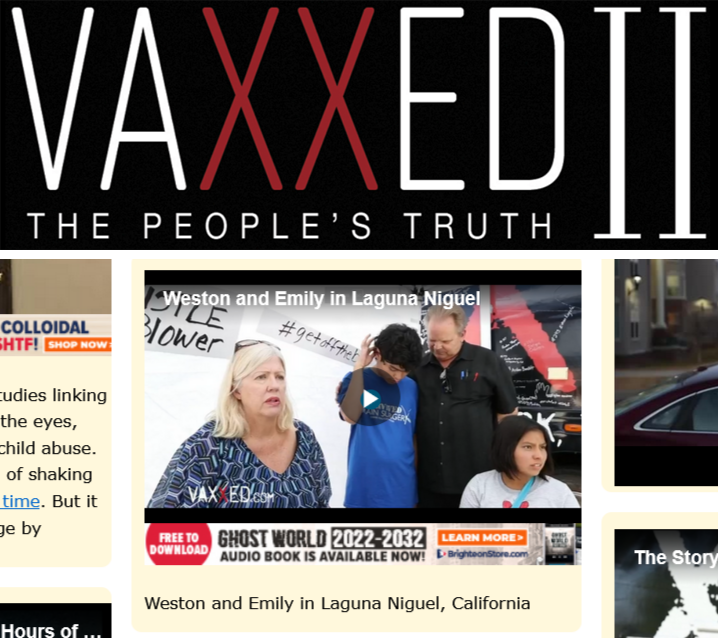
They are still monetizing Weston and Emily’s VaxXed Story like the thousands of others. Pathetic human beings doing what they do best.
Click on the above image to watch a video where I share some important thoughts that drive me… especially 666, Mark of the Beast.
Greg Wyatt



